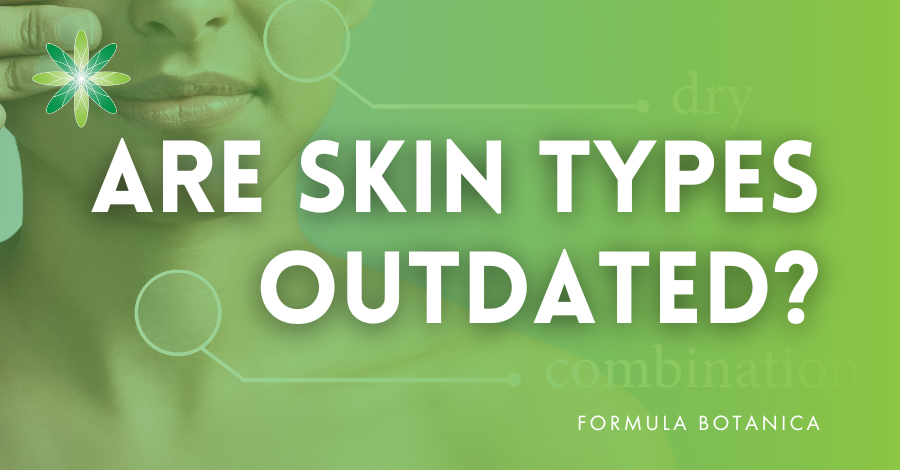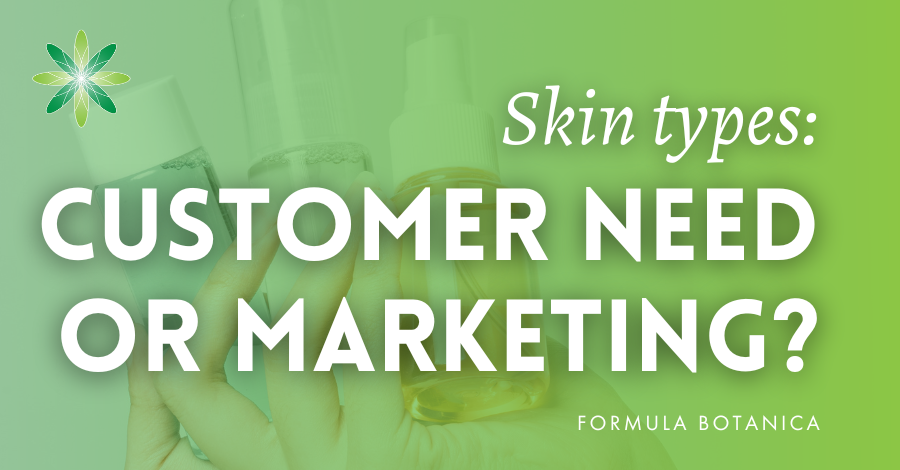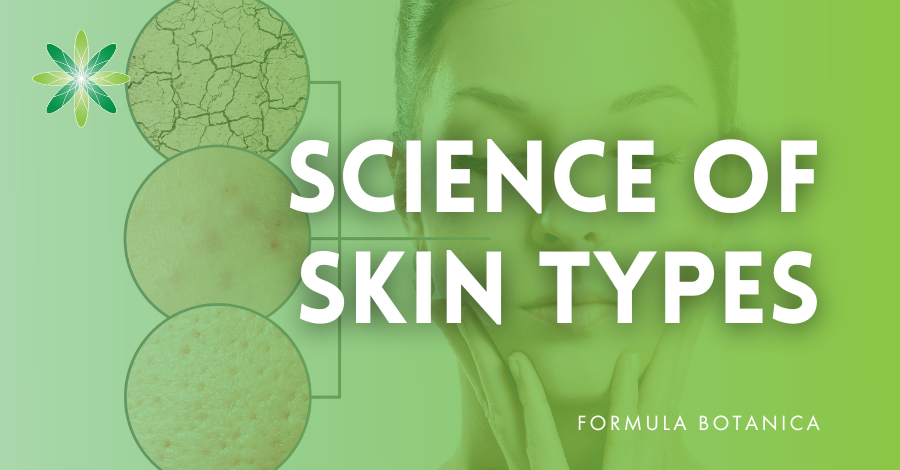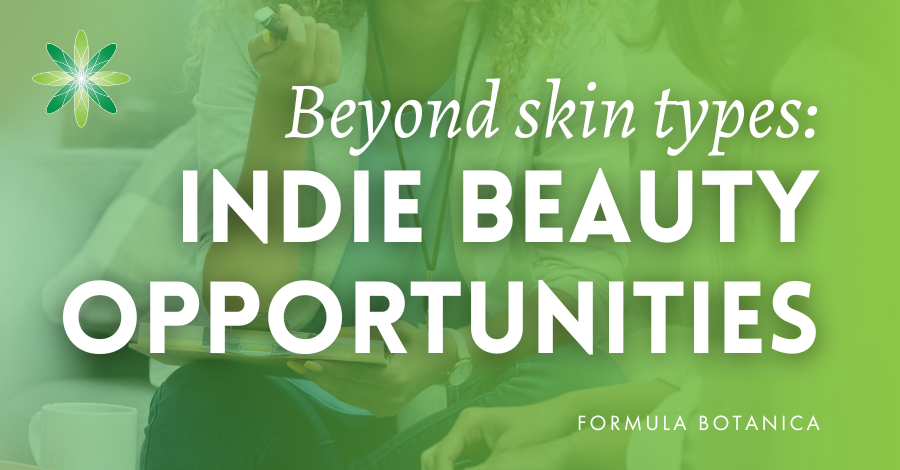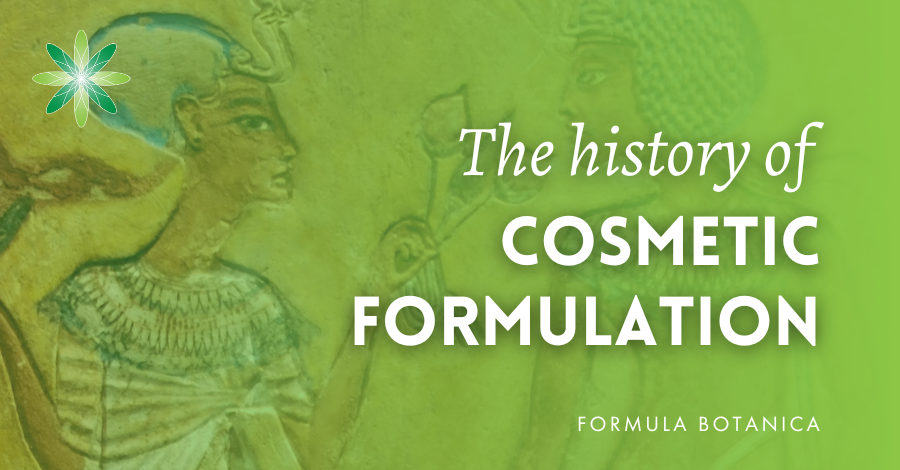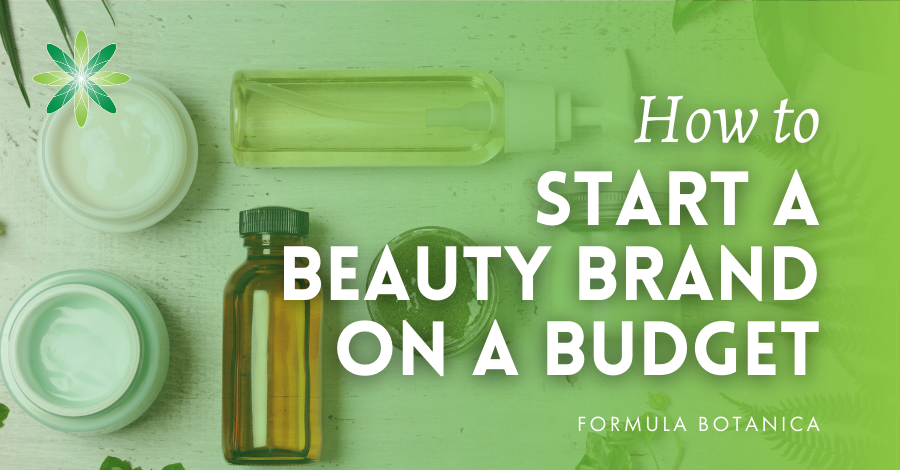Updated: 24.10.23
In the vast world of skincare, we have become accustomed to choosing products based on our “skin type”. When you approach a cosmetics counter, you scan rows of products to single out those that you believe match your skin type. From oily and dry to combination and sensitive, and from teenage to menopausal skin, every possible skin type is catered for.
The concept of skin types has long dictated our choices when it comes to cosmetics for our faces. But have you ever wondered why we categorise products in this way? Is it based on solid scientific evidence, or is it simply a marketing strategy tailored to consumer expectations and to sell more products? If the latter is the case, then in these days of needing to do right by the planet and reduce our consumption for sustainability’s sake, can the beauty industry justify formulating for so many different skin types?
In this blog post, we delve into the origins of skin types, examining their historical roots and the factors that shaped their development in the beauty industry. We question the validity of this classification system, challenging the notion that skin types are an absolute truth. By doing so, we aim to open up a discussion on whether skin types are a myth and an outdated idea, particularly in the realm of natural cosmetic formulation. Read on to make your mind up and join the debate. If skin types in cosmetic formulations are outdated, what lies beyond them to guide us as formulators and as customers?
Understanding the origins of skin types
Throughout the history of the modern cosmetics industry, the categorisation of products into skin types has played a significant role in the development and marketing of skincare formulations.
In the early days of the beauty industry, skincare products were relatively simple and had a one-size-fits-all approach. Although, even in the late 1900s, we find examples of beauty pioneers tailoring cosmetics to specific groups of customers. The indomitable Madam C. J. Walker is one example. She formulated her own line of cosmetics and haircare aimed at African-American women and became the first woman of colour to become a multimillionaire in the States.
As the cosmetics industry grew and the concept of branding took shape, marketers recognised the need to address the diverse range of skin concerns and preferences among consumers. Another beauty pioneer, Helena Rubinstein, is said to have “invented” the concept of skin types at the beginning of 1900 (i). If so, this correlates with the concept of skin types as a marketing tool.
But, which came first: our needs or those of marketers?
Initially, the categorisation of skin types was relatively broad, often involving terms like “oily,” “dry,” and “normal”, which are still common today. Over time, the concept became more nuanced, with the addition of subcategories such as “combination” and “sensitive.”
Now, we arrive at the possibility of oily and sensitive skin, or dry and sensitive skin. While these refinements allow brands to further customise their product offerings and target specific skin concerns, they also confuse consumers, who are faced with greater complexity as they assess their own type of skin before buying a product. As we’ll see later, we usually get this wrong.
The Role of Marketing and Consumer Expectations
Marketers recognise the power of personalisation and customisation in appealing to consumers and creating a sense of individualised care. We’ve got articles on this blog about just that:
Finding the ideal niche for your indie beauty brand
10 ideas to inspire your beauty brand
We focus on niches you can make uniquely yours as formulators. However, mainstream cosmetics brands have long held onto the notion of skin types as the overriding system to categorise us as beauty consumers.
Through clever advertising and promotional campaigns, the language of skin types has become deeply ingrained in cosmetic marketing, reinforcing the belief that using products specifically formulated for one’s skin type is essential for achieving optimal results.
Consumer expectations also play a significant role in driving the demand for skin-type-based cosmetics. Many of us have been conditioned to identify ourselves with a particular skin type, believing it determines the most suitable products for our unique needs. This expectation reinforces the idea that different skin types require specific formulations, leading to a market where brands strive to meet these perceived needs.
The Scientific Basis of Skin Types: Fact or Fiction?
Skin is a complex organ influenced by various factors, including genetics, environmental conditions, lifestyle choices, age, diet, and skincare habits. Just this list alone indicates that our “skin type” today is likely to change even within a few months as factors affecting it are constantly fluctuating. So, categorising individuals into rigid skin types oversimplifies the complexity of how our skin functions and the diversity of possible skin conditions.
Approaches to classifying skin types
A classic test to determine our skin type is to measure the sebum output on various areas of our facial skin using a sebumeter. However, even if this shows degrees of dryness or oiliness in our skin, it is a snapshot view at one point in time. The main issue, though, is that as beauty product consumers, our own assessment of our skin is very subjective, and in some studies, it has been shown that self-assessment is at variance with the actual amount of sebum secreted (ii).
There have been methods and approaches developed to provide a more comprehensive understanding of skin characteristics in order for skincare to be more closely tailored to individual needs. One well-known approach is the Baumann Skin Typing System, which was developed in 2004 by University of Miami dermatology professor Leslie Baumann. This system aims to categorise individuals into specific skin types based on four independent spectrums: dry to oily; sensitive to resistant; pigmented to non-pigmented; and wrinkled to tight. This spectrum is then divided into multiple subtypes, allowing for a more nuanced classification.
It takes into account various factors that contribute to an individual’s skin characteristics, including the amount of sebum produced, skin barrier function, propensity for skin reactions, the presence of pigmentation, and skin elasticity.
However, despite the scientific rigour with which the Baumann Skin Typing System was developed, it has not been broadly accepted or adopted as a standard classification system within the dermatological, scientific community or the cosmetics industry. As with any scientific hypothesis, it had its critics. For the mainstream cosmetics industry, it would in any case prove too complex to communicate to beauty product consumers.
Any attempt at skin type classification is likely to be flawed on account of its inability to recognise that each person’s skin is unique and can exhibit characteristics from multiple spectrums simultaneously. Once again, regional, seasonal, climatic, genetic, and the raft of other factors we mentioned above, including our ethnicity (iii), come into play in defining our skin type. In fact, categories such as teenage or menopausal that we mentioned at the start are more useful in guiding cosmetic formulation than the classic skin-type nomenclatures.
Where does this leave us with skin types?
This lack of consensus raises questions about the scientific basis of skin types and whether they truly provide meaningful guidance for skincare choices. Even if we buy into the concept of the classic categories, we are still presented with a ‘one-size-fits-all’ concept that ignores our individual needs. Does everyone in the dry skin category have the same skin issues? We doubt it.
By moving away from rigid skin type classifications, we open up a world of possibilities for tailored skincare routines and formulations that cater to individual needs. Personalised skincare, the rise of AI in cosmetics, trends promoting active ingredients, and the need to nurture and maintain the skin barrier and microbiome all offer flexibility and customisation based more on individual needs.
Perhaps we have finally arrived at a point in the history of cosmetics where we debunk skin types. And indie beauty brands, who are often those closest to their customers, are well placed to grasp the opportunities in this post-skin-types’ era.
Opportunities for indie beauty brands
As an indie brand, you have more flexibility and are likely to be agile enough to cater to the individual needs and preferences of your customers. The direct interaction between you as an indie brand and your customers also fosters a deeper sense of trust and connection, allowing for personalised recommendations and a more intimate customer experience. We know this is true, as many of our graduate brand founders have told us. See these case studies for evidence of this in action:
Podcast episode 128: From indie beauty idea to selling 500 eye creams – an interview with founder Naz Bashir of Solo Skin London on how she grew her community of customers, who are now a sounding board for her product development.
Episode 157: From bootstrapping to award-winning beauty brand – interview with founder Roshanne Dorsett of The Glowcery who talks about the power of her community and the value of engaging with them on her YouTube channel.
This personalised approach aligns with the values of indie brands, emphasising the craftsmanship, expertise, and attention to detail that set them apart from mass-produced alternatives. As the demand for customised skincare continues to grow, indie brands have the opportunity to carve out a niche and build loyal customer bases by providing innovative and personalised solutions that larger brands may struggle to replicate.
Empowering Consumers: customisation as a trend
The rise of customisation in skincare is driven by a desire to empower consumers and offer them greater control over their beauty routines. By involving customers in the process of formulating or customising their skincare, they become active participants rather than passive recipients of mass-produced products. This trend aligns with the growing consumer demand for transparency, authenticity, and individuality.
This change in how we approach buying skincare is in no small part down to almost two decades of social media, which has placed us more in control as creators of, not just recipients of, information. Big brands and marketers no longer shape the narrative alone. Of course, misinformation is on the rise too, and urban myths and misconceptions about every aspect of beauty abound online.
However, this presents indie brands with a chance to present themselves and their skincare solutions in a more personal way. Our students and graduates at Formula Botanica use the expertise and experience they gain on our courses to great effect, opening up channels in an honest, open, and transparent way with their customers to present sound facts about organic skincare.
Be innovative, break free from the classic skin types in cosmetics, and explore how to meet your own customers’ needs in new, exciting ways. For example, some brands offer DIY skincare kits that allow customers to mix and create their own products at home based on their specific needs. These kits typically provide a selection of active ingredients, essential oils, or base formulas that can be combined according to the individual’s preferences and skin concerns.
Explore these Formula Botanica graduate brands who that putting power back into the hands of their customers, offering workshops, kits, and cosmetic ingredients for customers to personalise at home.
Siriously Organic, founded in Berlin, Germany, by Sarah Siri Blejc, offers kits for home use.
Naturkosmetik München (Natural Cosmetics Munich), founded by Mareike Peters, Germany, offers ready-made skincare and raw ingredients, as well as DIY kits to formulate the skincare products yourself.
EcoSpa, founded in Poland by Artur Chaber, provides pure, natural cosmetic ingredients for ‘Do-It-Yourself’ cosmetics.
This hands-on approach not only offers a sense of personalisation but also promotes a deeper understanding and connection with one’s skincare choices. You will need to think through how to deliver customisation cost-effectively, and, of course, safely. You would need, for example, to ensure any personalised kits were safety tested and applicable to home use. However, think laterally, speak to your potential or actual customers, and you will find exciting niches to develop.
Conclusion: the end of skin types in cosmetics?
In conclusion, the shift towards customisation and personalisation in skincare represents an exciting direction for the industry. Moving away from the traditional reliance on skin types opens up new avenues for tailored skincare routines and formulations that truly address individual needs.
Whether through AI-powered analysis, custom formulations, or home skincare kits, the emphasis on customisation empowers consumers to take charge of their skincare journey, resulting in a more personalised and satisfying experience.
While customisation will rely on us assessing our own skincare needs (much as we currently assess our skin type), there is every reason to believe that AI will assist with that and play a huge role in shaping the future of customisation in the cosmetics industry. It may be the tipping point for finally laying skin types to rest.
References and further reading
(i) K. Steventon, et al; Consumer Perspective—Skin Types and Sensory Experience, (2013), Cosmetics & Toiletries.
(ii) SW Youn, et al; (2002) Evaluation of facial skin type by sebum secretion: discrepancies between subjective description and sebum secretion.
(iii) Pappas A, et al; (2013): Age and ethnic variations in sebaceous lipids.
Cosmetic skin types: myth or chaos? International Association for Applied Corneotherapy (2013).
Leave us a comment

Liz was Formula Botanica’s Content Coordinator between August 2020-2024. Liz worked as a professional blogger, journalist and site developer for many years and was also part of the Formula Botanica student community. Read more about the Formula Botanica Team.

